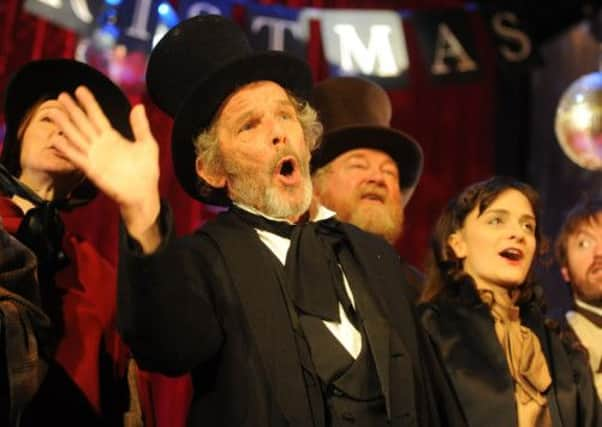Joyce McMillan: A Christmas Carol provides festive cheer


The show is the Royal Lyceum’s new version of Dickens’ A Christmas Carol, starring the wonderful Christopher Fairbank; and as the applause rolls on, I find myself marvelling yet again at the skill with which Dickens, in this magnificent 170-year-old story, combines almost everything we could ever want from a Christmas tale.
The question of what a Christmas show should offer has, of course, become increasingly contested, as our society has become more secular and multicultural. What theatres desperately need, to balance their annual budgets, is a show that will attract a big school-and-family audience, and will encourage them to return next year; and over the last two or three decades, many theatres have therefore rejected traditional panto altogether, in favour of straightforward children’s adventure stories. And although the vast majority of theatres still stick with the old, flexible panto formula, they often present it, these days, with a powerful twist of post-modern irony.
Advertisement
Hide AdFor what it’s worth, though, it seems to me that the ideal festive show needs four elements, magic, morality, merriment and misrule; and that if you have fewer than three of them, your Christmas show may struggle to make much impact, whatever form it takes. The magic radiates from the story, which should be a real romance, featuring a journey through darkness towards light and rebirth. This is the deep meaning of the midwinter solstice festival in any culture, the celebration of the moment when darkness is defeated, and the sun begins to return; yet many modern Christmas shows short-change the story or send it up, as if afraid to risk any hint of sentimentality.
Then there’s morality, either Christian or humanistic. This is easy to graft on to that traditional story of light defeating darkness, provided you associate the darkness with greed, or tyranny, or some other recognisable worldly evil; all the best Christmas stories do this almost without effort.
The merriment is essential, contained in all the jokes and slapstick of any good festival; at A Christmas Carol, I heard a little child cackling with merriment, as he got the joke during the game of Twenty Questions at Scrooge’s nephew’s house. And both merriment and morality are closely related to misrule, that traditional and political element of Christmas entertainment that allows for a once-a-year day when the rules of the world are reversed, when men become women, women become men, and the powerful and pretentious are brought low, often by having custard pies slapped into their faces.
The secret of Dickens’ Christmas Carol, in other words, is that it contains and celebrates all four of these elements more completely than any other Christmas show I know; although a good panto with a well-told story can run it close, and so can Stuart Paterson’s two great 1980s versions of Cinderella and The Snow Queen.
What the story captures, in the end, is a Christmas spirit that is not only about Christianity and not only about an ugly feast of secular self-indulgence; but about an ancient midwinter human festival that celebrates the triumph of light, and with it, of generosity, compassion, and fellow feeling. And of course, there are still a few Scrooges about who will say “Bah, humbug,” to that. If you are creating a Christmas show, though, you can’t afford to be one them; and if you’re in the audience, your job is to suspend your disbelief, and to surrender – just once a year – to the ancient idea of a magical day when all wrongs can be righted, and the world made new, once again.